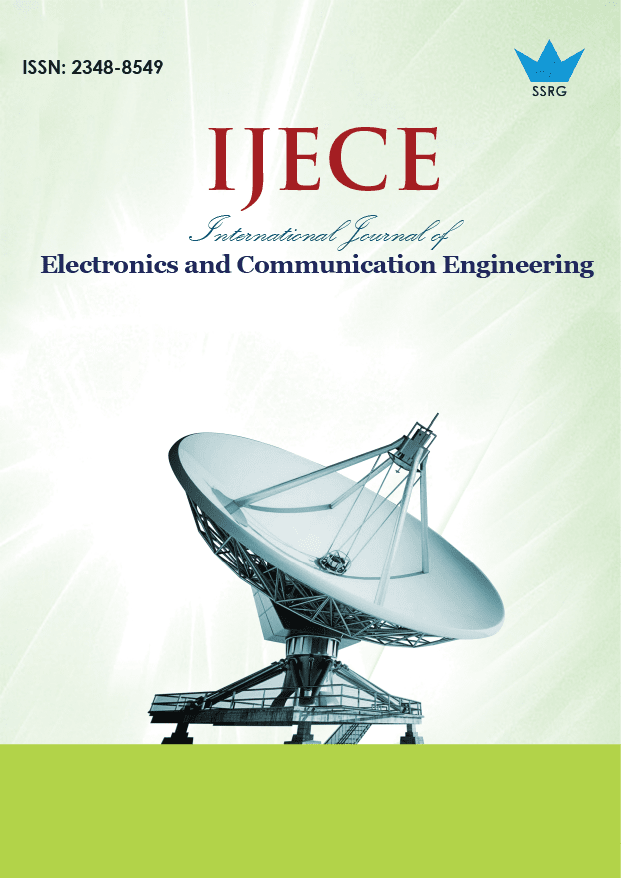Design of a Personal Protective Equipment detection system using Computer Vision and Convolutional Neural Networks

| International Journal of Electronics and Communication Engineering |
| © 2025 by SSRG - IJECE Journal |
| Volume 12 Issue 4 |
| Year of Publication : 2025 |
| Authors : Brayan Kevin Medina Villagomez, Paul Andy Quispe Huachaca, Jesús Talavera Suarez |
How to Cite?
Brayan Kevin Medina Villagomez, Paul Andy Quispe Huachaca, Jesús Talavera Suarez, "Design of a Personal Protective Equipment detection system using Computer Vision and Convolutional Neural Networks," SSRG International Journal of Electronics and Communication Engineering, vol. 12, no. 4, pp. 159-166, 2025. Crossref, https://doi.org/10.14445/23488549/IJECE-V12I4P115
Abstract:
In work environments, the identification and correct use of Personal Protective Equipment (PPE) is essential to avoid incidents and safeguard employees' health. In this paper, an innovative strategy for the automatic identification of PPE using computer vision techniques and Convolutional Neural Networks (CNN) is presented. The method uses a specially trained CNN to interpret images of the equipment and a labeled dataset that was developed especially for PPE detection. Standard item detection criteria were used to evaluate the system's performance, and they were shown to be effective in correctly identifying Personal Protective Equipment (PPE) in photographs of industrial environments. The results of this study show a great degree of sensitivity and accuracy in the identification of several kinds of Personal Protective Equipment (PPE), indicating that the development of this technology can improve automated inspection tasks and safety in the industrial workplace, avoiding dangerous circumstances by providing better control.
Keywords:
Computer vision, Convolutional Neural Networks, Personal protective equipment, Detection System.
References:
[1] Deming Yang, and Ling Yang, “A Deep Learning-Based Framework for Vehicle License Plate Detection,” International Journal of Advanced Computer Science and Applications, vol. 15, no. 1, pp. 1009-1018, 2024.
[CrossRef] [Google Scholar] [Publisher Link]
[2] Honggang Wang, “Detection of Personal Protective Equipment (PPE) Using an Anchor Free-Convolutional Neural Network,” International Journal of Advanced Computer Science and Applications, vol. 15, no. 2, pp. 366-374, 2024.
[CrossRef] [Google Scholar] [Publisher Link]
[3] Yan Wang, “A Deep Learning-Based Approach for Vision-Based Weeds Detection,” International Journal of Advanced Computer Science and Applications, vol. 14, no. 12, pp. 75-82, 2023.
[CrossRef] [Google Scholar] [Publisher Link]
[4] Deepa, K. Jyothi, and Abhishek A. Udupa, “An Improved Depth Estimation Using Stereo Matching and Disparity Refinement Based on Deep Learning,” International Journal of Advanced Computer Science and Applications, vol. 14, no. 11, pp. 552-559, 2023.
[CrossRef] [Google Scholar] [Publisher Link]
[5] William Percy Cuno Zuniga et al., “Design of a Terrain Mapping System for Low-Cost Exploration Robots Based on Stereo Vision,” Przegląd Elektrotechniczny, vol. 99, no. 5, pp. 270-275, 2023.
[CrossRef] [Google Scholar] [Publisher Link]
[6] Abdulaziz Alorf, “A Robust Deep Learning Model for Terrain Slope Estimation,” International Journal of Advanced Computer Science and Applications, vol. 15, no. 1, pp. 1231-1245, 2024.
[CrossRef] [Google Scholar] [Publisher Link]
[7] Ahatsham Hayat, and Fernando Morgado-Dias, "Deep Learning-Based Automatic Safety Helmet Detection System for Construction Safety," Applied Sciences, vol. 12, no. 16, pp. 1-14, 2022.
[CrossRef] [Google Scholar] [Publisher Link]
[8] Darío G. Lema, Rubén Usamentiaga, and Daniel F. García, “Low-Cost System for Real-Time Verification of Personal Protective Equipment in Industrial Facilities Using Edge Computing Devices,” Journal of Real-Time Image Processing, vol. 20, pp. 1-18, 2023.
[CrossRef] [Google Scholar] [Publisher Link]
[9] Hongzhen Wang et al., "Gated Convolutional Neural Network for Semantic Segmentation in High-Resolution Images," Remote Sensing, vol. 9, no. 5, pp. 1-15, 2017.
[CrossRef] [Google Scholar] [Publisher Link]
[10] Fabio Oliveira-Teixeira, Thiago Pedro Donadon-Homem, and Alexandre Pereira-Junior, “Artificial Intelligence Application to Monitor the Use of Protective Masks,” Emerging Risks and Opportunities in the Latin American and Caribbean Region, vol. 19, no. 33, pp. 205-222, 2021.
[CrossRef] [Google Scholar] [Publisher Link]
[11] Ryan Abraham León Montero, and Jessica Ayme León Montero, “Development of an Artificial Vision Algorithm for the Recognition of the Correct Use of Epp,” 4th LACCEI International Multiconference on Entrepreneurship, Innovation and Regional Development - LEIRD 2024, pp. 1-11, 2024.
[CrossRef] [Publisher Link]
[12] Hafiz Mughees Ahmad, and Afshin Rahimi, “SH17: A Dataset for Human Safety and Personal Protective Equipment Detection in Manufacturing Industry,” Journal of Safety Science and Resilience, pp. 1-32, 2024.
[CrossRef] [Google Scholar] [Publisher Link]
[13] Adrian Şandru et al., “SuPEr-SAM: Using the Supervision Signal from a Pose Estimator to Train a Spatial Attention Module for Personal Protective Equipment Recognition,” Arxiv, pp. 1-10, 2021.
[CrossRef] [Google Scholar] [Publisher Link]
[14] Mohammed Imran Basheer Ahmed et al., “Personal Protective Equipment Detection: A Deep-Learning-Based Sustainable Approach,” Sustainability, vol. 15, no. 18, pp. 1-18, 2023.
[CrossRef] [Google Scholar] [Publisher Link]
[15] Jye-Hwang Lo, Lee-Kuo Lin, and Chu-Chun Hung, “Real-Time Personal Protective Equipment Compliance Detection Based on Deep Learning Algorithm,” Sustainability, vol. 15, no. 1, pp. 1-15, 2023.
[CrossRef] [Google Scholar] [Publisher Link]
[16] M. Massiris et al., “Automated System for Monitoring the Use of Personal Protective Equipment in the Construction Industry,” Ibero-American Journal of Automation and Industrial Computing, vol. 18, no. 1, pp. 68-74, 2021.
[CrossRef] [Google Scholar] [Publisher Link]
[17] Jonathan Karlsson et al., “Visual Detection of Personal Protective Equipment and Safety Gear on Industry Workers,” Arxiv, pp. 1-8, 2022.
[CrossRef] [Google Scholar] [Publisher Link]
[18] Md. Shariful Islam et al., “A Deep Learning Approach to Detect Complete Safety Equipment for Construction Workers Based on YOLOv7,” Arxiv, pp. 1-8, 2024.
[CrossRef] [Google Scholar] [Publisher Link]

 10.14445/23488549/IJECE-V12I4P115
10.14445/23488549/IJECE-V12I4P115